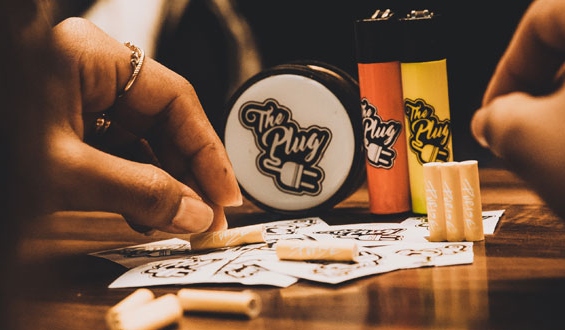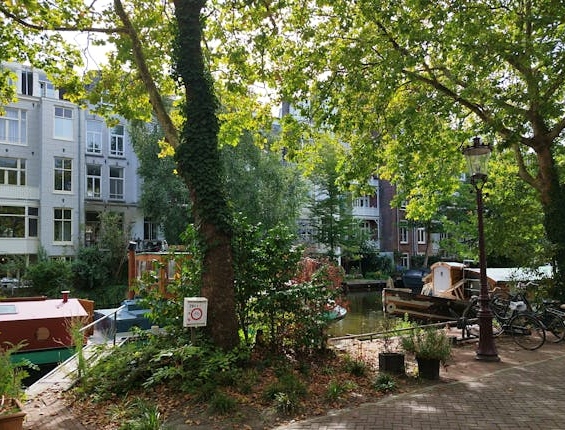In cannabis culture, few names resonate with as much respect and nostalgia as Afghan hash. This traditional hashish process is known as Rosh or Wash and has been the foundation of Middle Eastern culture, medicine, and hash culture for centuries. And around cities like Amsterdam, Afghani continues to play a significant role in the ongoing story of coffeeshops, fine cannabis strains, and worldwide weed appreciation.
As probably every cannabis enthusiast in the world, you know that Amsterdam is one of the main spots in the world where cannabis lovers can converge to appreciate the most premium of all weeds and probably some of the smoothest hash throughout the world, set in the menu of coffeeshops that bring each year these kinds of presentations. With so many hands in the pot these days, the Best Afghan hash in Amsterdam perhaps remains a favourite with those who care about quality and tradition, and a product which successfully connects modern culture to an age-old craft. Ingredients:100% cold water hashish.
In this blog, we take you through the interesting history of Afghan hash—from its age-old roots in Central Asia to the way it helped shape Amsterdam’s coffeeshop culture.
How Afghan Hash is Made: A Tradition of Quality
Hashish has long been at the center of production in Afghanistan. “This country’s special climate, special type of earth, and its cannabis genetics are ideal for growing resin-rich plants. Historically, our local farmers have been involved in the art of hash making, and it has been handed down through generations.
Conventionally, Afghan hash is produced through hand-rubbed techniques. Farmers scrape the resin off cannabis plants, form it into bricks or balls, and cure it to intensify its potency, aroma, and flavor. It is a laborious process, but the reward is a hashish that is terpene-rich, smooth in its touch, and eventually loved across cultures.
This commitment to quality is what makes Afghan hash so legendary. When it comes to authenticity in hashish, Afghan varieties are often the standard bеаrеrѕ. This is the heritage that led to the product's reputation all around the globe, even in the Cannabis capitals of the world like Amsterdam.


The Story of How Afghan Hash Became a Global Sensation
Starting in the 1960s and 1970s, as the world zigzagged across the globe in increasing numbers, Afghanistan became a stop on the widely popular “Hippie Trail.” Travelers from all over Europe and beyond traveled through the region, encountering Afghan hash in person and frequently returning home with tales (and sometimes a taste or two).
This was the epoch that ushered in the international renown of Afghan hash. The quality and the special effects made it superior to other available types. By the end of the 20th century, Afghan hash was not merely regional; the hash was a worldwide cultural emblem of craft and tradition.
To a city that was already rapidly acquiring a reputation as one where cannabis was both tolerated and celebrated, Amsterdam was now added to becoming one of the most important hash trading cities in Europe, particularly for Afghan hash. Dutch coffeeshops in the capital of the Netherlands began selling hash imported from Afghanistan, and locals as well as tourists got their first taste of the Afghan product. Still, the best Afghan hash in Amsterdam stands as a tribute to this enduring cultural trade.
What is the best Afghan Hash in Amsterdam?
Cannabis is widely available in the city’s coffeeshops in many forms, but Afghan hash is in a category all its own. What makes the best Afghan hash in Amsterdam stand out from the others doesn’t simply rest on its legacy; it is the quality sourcing, proper curing, and traditional production methods that it employs, staying true to its roots.
Some of the unique characteristics that keep Afghan hash in a class of its own are:
Texture and Color – Good Afghan hash has a dark outside and is extremely soft and malleable. It is brown or golden in cross-section when cut.
Smell – Because it’s Afghan, dusted in Mayans, and cultured near leopards, Afghan hash smells like earth and spice, and has a sweetness at the base that separates it from Moroccan or Lebanese hashish.
Handiwork – Even in contemporary Amsterdam, the Afghan hash you find in upscale coffeeshops is the product of pure artisanal care, yielding a potent experience for heritage lovers.
Tradition – Meanwhile, the newer types of hash – like those imported from the west – remain fairly true to its roots, produced using methods that have remained unchanged for hundreds of years.
For locals and tourists alike, getting your hands on the maximum strength Afghan hash in Amsterdam is much more than simply a transaction – it’s an opportunity to explore history and enjoy a product riddled with authenticity.


Afghan Hash vs. Other Hash Strains: What’s the Difference?
Hashish is produced throughout the world, and is native to many regions, all of which produce the drug in a variety of ways unique to their traditions, tastes, and cultures. Contrasting Afghan hash against other types shows what makes it special.
Afghan Hash vs. Moroccan Hash
Moroccan Hash – The most common form of hash is Moroccan hash, and that comes from the northern part of the country. Though Moroccan hash has its own fans, Afghan hash has a tendency to be milder, darker, more aromatic, and has a richer tradition of hand-rubbed methods.
Afghan Hash vs. Lebanese Hash
Lebanese hash is often reddish or golden, with a drier texture. Though it provides the same palate experience, Afghan hash contains more resin and gives off a bolder, dirtier scent.
Afghan Hash vs. Modern Extracts
In today’s world of cannabis, modern concentrates such as shatter or wax are currently all the rage. But these extracts’ often solvents and high-tech-assistance aren’t used for Afghan hash, which is 100% natural and old school, using nothing but plant resin and human hands.
This gap is what makes Afghan hash unique in Amsterdam coffeeshops. More than just another product on the menu — it’s a slice of history that still reverberates through cannabis culture today.
Afghan Hash and Identity of Amsterdam
Amsterdam has been a place of meeting and mingling for centuries. Its coffee shops are a testament to this, with their products imported from various countries. Afghan hash, in particular, has played an important role in shaping Amsterdam’s identity as a city that embraces global cannabis traditions.
For locals, Afghan hash means stability and tradition. For many tourists, finding the city’s best Afghan hash is a way of navigating its singular coffeeshop culture. It’s more than a product now, it’s a cultural reference that links Amsterdam to Afghanistan’s centuries-old cannabis traditions.

Why Afghan Hash on the Coffeeshop Menus Still Dominates the Streets of Amsterdam
Despite new breeds and concentrates, Afghani hash is still a staple in Amsterdam’s coffeeshops. Here are some reasons you see it time and time again:
Authenticity – Afghan hash is one of the most authentic hashish on the market because it has never been industrialized.
Cultural Relevance – It reaches potential buyers with a rich heritage associated with quality workmanship that goes back centuries.
Consistency - Afghan hash has had a level of consistency that is clear when having been around for decades. It quickly becomes evident that this is the obvious choice in a cannabis landscape that is always changing.
So much so, in fact, that most coffeeshops still focus on Afghan hash as part of their legacy menu. And it’s a messenger of Amsterdam’s status as a connective node between worldwide cannabis cultures.
The Way of Afghanistan Hash in Amsterdam
As cannabis markets are developing around the world, with more places becoming legal and more products emerging, Afghan hash continues to persist. Because it’s such a craft product, and it’s the shit here in Amsterdam.
In the future, the best Afghan hash Amsterdam offers will probably still draw the kind of people who want more than a commodity, but a story that combines history, authenticity, and skill. However, whether it’s jaded locals enjoying a taste of nostalgia or international visitors trying a discovered treasure for the first time, Afghan hash is a timeless part of the story that won’t be going anywhere.
Final Thoughts
The tale of Afghan hashish is not simply a cannabis story — it is a story about culture, history, and global connection. Afghan hash has formed and reshaped the image of hashish around the world, from the mountains in Afghanistan to the streets of Amsterdam.
And today in Amsterdam, the best Afghan hash in Amsterdam is not just another coffeeshop option; it’s a living piece of history. The Plug Coffeeshop is known for sourcing premium varieties, ensuring compliance with Dutch regulations while maintaining a boutique and authentic Amsterdam experience. Its special characteristics, old-school production processes, and rich cultural heritage have ensured it a place amongst the favorite types of hash found all over the world.
For travelers discovering Amsterdam’s coffeeshop culture, Afghan hash is still a must-know stop on the road—though not to be shared in the name of use, rather as a nod to its seminal place in cannabis lore.
